
The Night Inspectors visited various parts of the city and observed the work of the officers. If a complainant was made against an officer, the Night Inspector would follow and observe that officer to ascertain if the complaint was valid or not. This often required the Inspector to have to wait in the cold for hours at a time.
Albert Headley was hired by the Metropolitan Police Department on July 1, 1896, and was assigned to the 4th Precinct. He served there for seven years, most of the time patrolling the “Bloodfield” beat, along the canal, a beat which had the reputation of being one of the toughest quarter in the city. Headley was warned that if he did not get out of the area he would be killed. That didn’t stop him.
Later he was assigned to Sergeant Daley who had been sent to that quarter of the city to break up the speakeasies.
In July 1902, Headley was made an Acting Sergeant and assigned to Headquarters as a Night Inspector. In February of 1905, he was promoted to Sergeant.
Sergeant Headley was referred to as one of the bravest men in the city.
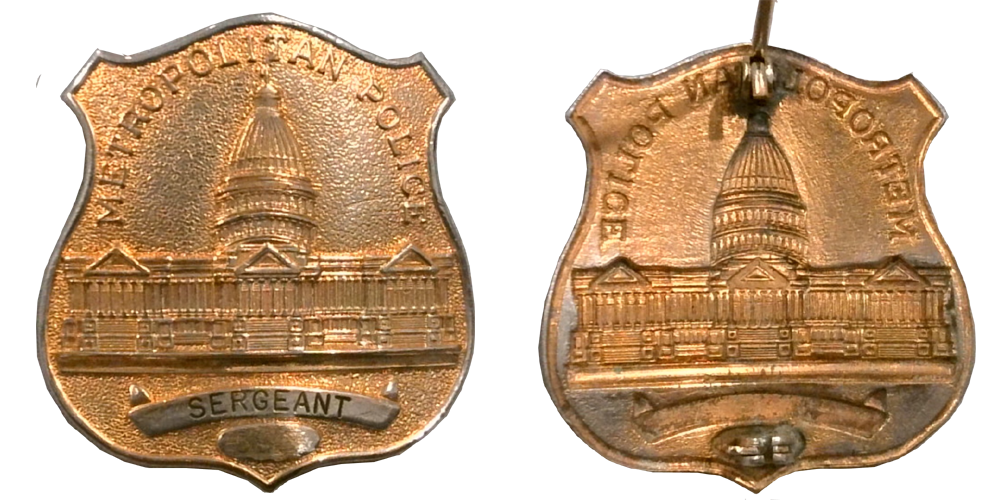
This is a traditional shellback style Sergeant badge which was quite popular until the switch to solid back Blackinton badges in November 2005. This badge was at one time attached to a retirement plaque before being sold. Badge number 66 would have been a fairly low badge number for a Sergeant and is consistent with being used by an older retiring officer.
This badge was most likely purchased as part of a retirement appreciation plaque and was not most like worn in the field. As with all things in regards to collecting, if you like the item then purchase it if you feel comfortable with the price.

This is a traditional shellback style Sergeant badge which was quite popular until the switch to solid back Blackinton badges in November 2005. This badge was at one time attached to a retirement plaque before being sold. Badge number 66 would have been a fairly low badge number for a Sergeant and is consistent with being used by an older retiring officer.
This badge was most likely purchased as part of a retirement appreciation plaque and was not most like worn in the field. As with all things in regards to collecting, if you like the item then purchase it if you feel comfortable with the price.
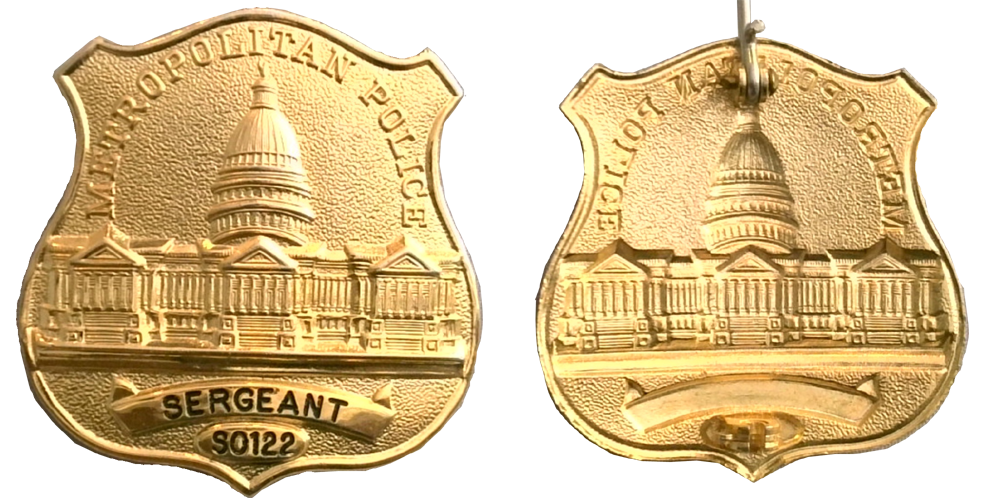
This is a traditional shellback style Sergeant badge which was quite popular until the switch to solid back Blackinton badges in November 2005. The rank is engraved and so is the badge number.
As with all things in regards to collecting, if you like the item then purchase it if you feel comfortable with the price.
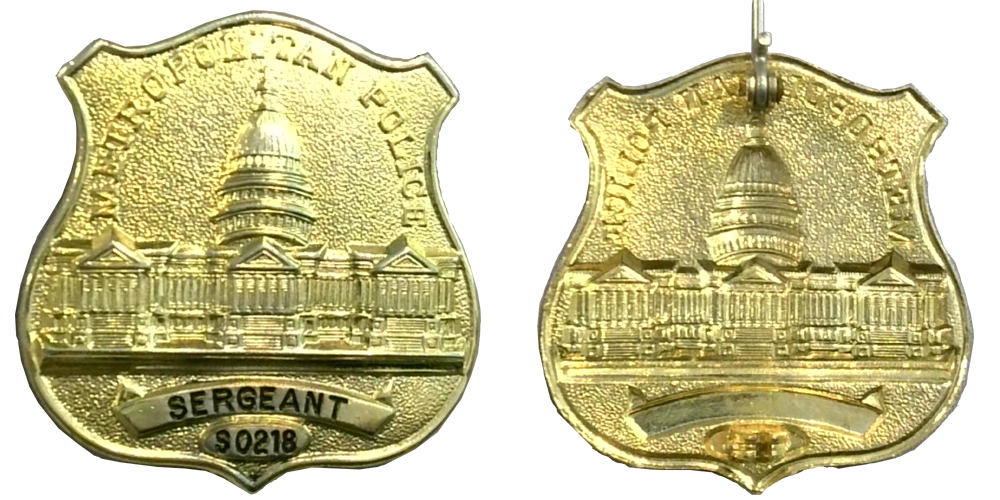
This is a traditional shellback style Sergeant badge which was quite popular until the switch to solid back Blackinton badges in November 2005. The rank is engraved and so is the badge number.
As with all things in regards to collecting, if you like the item then purchase it if you feel comfortable with the price.
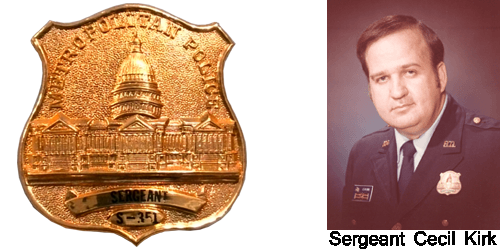
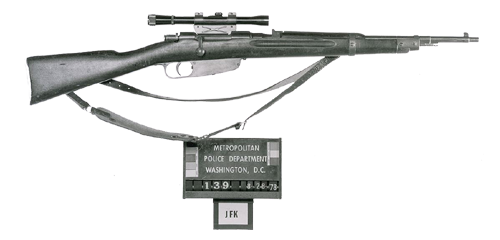
This badge was obtained from a collector who purchased it from the estate of Cecil Wayne Kirk (1938 – 2011). Kirk served with the Metropolitan Police Department from 1960 to 1980 as a police officer, investigator, Sergeant and photography expert. Kirk’s first photographic with the Metropolitan Police Department was on November 24 and 25, 1963, the state funeral of President John F. Kennedy.
In 1978, Kirk testified before the House Select Committee on Assassinations as a photography expert. During the 1978 hearings, Kirk would help prove the veracity of the often-disputed photographs of Lee Harvey Oswald posing in his backyard with the rifle he allegedly used to assassinate John F. Kennedy. In 1980, he transferred to Scottsdale, Arizona to investigate the murder of actor Bob Crane and revamped the city’s forensic investigative unit.
This is a traditional shellback style Sergeant badge with the rank and badge number printed on the badge instead of being engraved. This badge was most likely part of retirement appreciation gift and not a departmental issued worn badge. As with all things in regards to collecting, if you like the item then purchase it if you feel comfortable with the price.

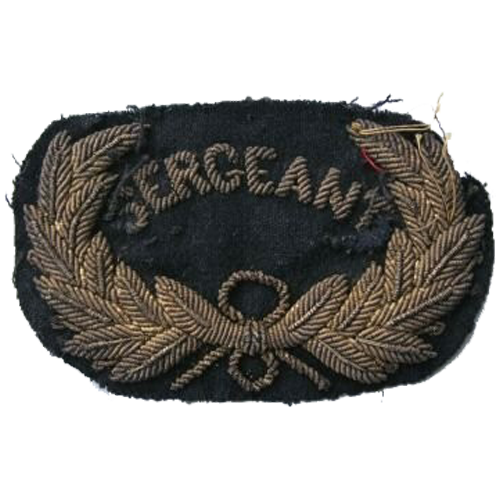
One of the first cap badges used to distinguish the different ranks on the Metropolitan Police Department.
This was used in the 1890s through to the early 1900s.
The wreath is dark blue with tarnished gold bullion thread.
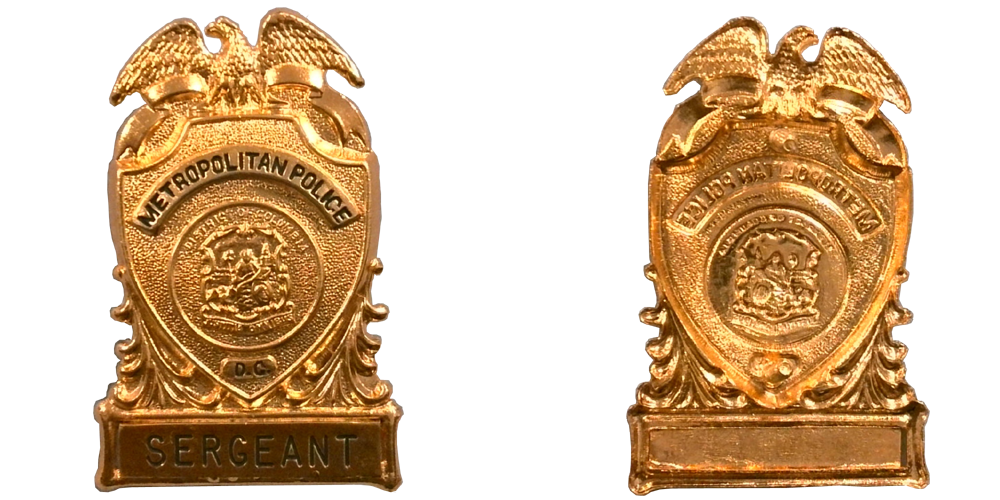
Cap plate with the applied rank Sergeant engraved. After moving away from applied numbers to cap plates in 1999, the cap plates of officials often simply had their rank engraved on the plate and not the badge number. This appears to have been departmental issued and worn. There is not the secondary market for cap plates that there is for badges as such most officers who would order a second badge would not order a second cap plate. As with all things in regards to collecting, if you like the item then purchase it if you feel comfortable with the price.
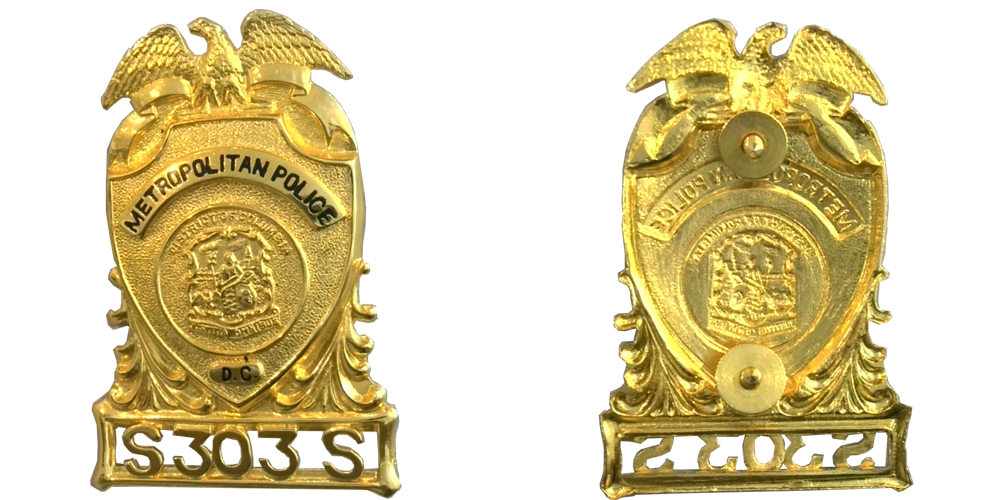
This is the second series of cap plates with applied numbers which were in use from around 1930 to 1999. An “S” was applied to the cap plate to help designate the rank of the individual. This cap plate appears to have been departmental issued and worn. There is not the secondary market for cap plates that there is for badges as such most officers who would order a second badge would not order a second cap plate. As with all things in regards to collecting, if you like the item then purchase it if you feel comfortable with the price.